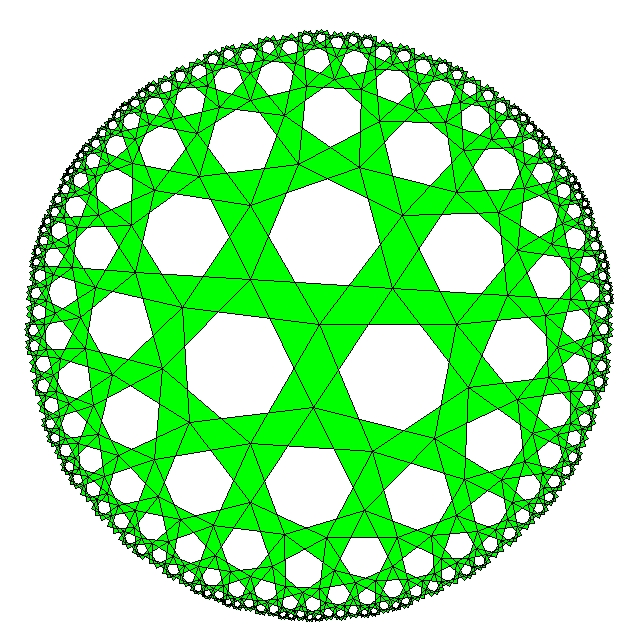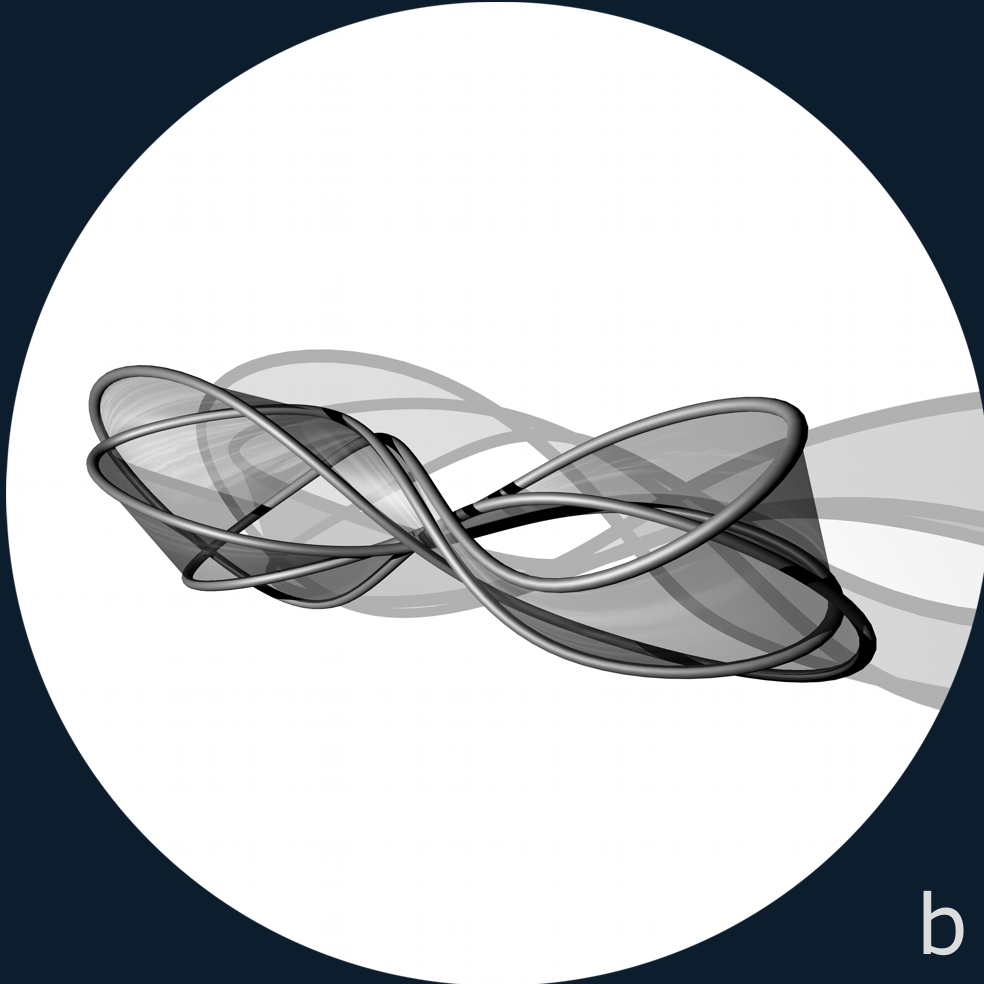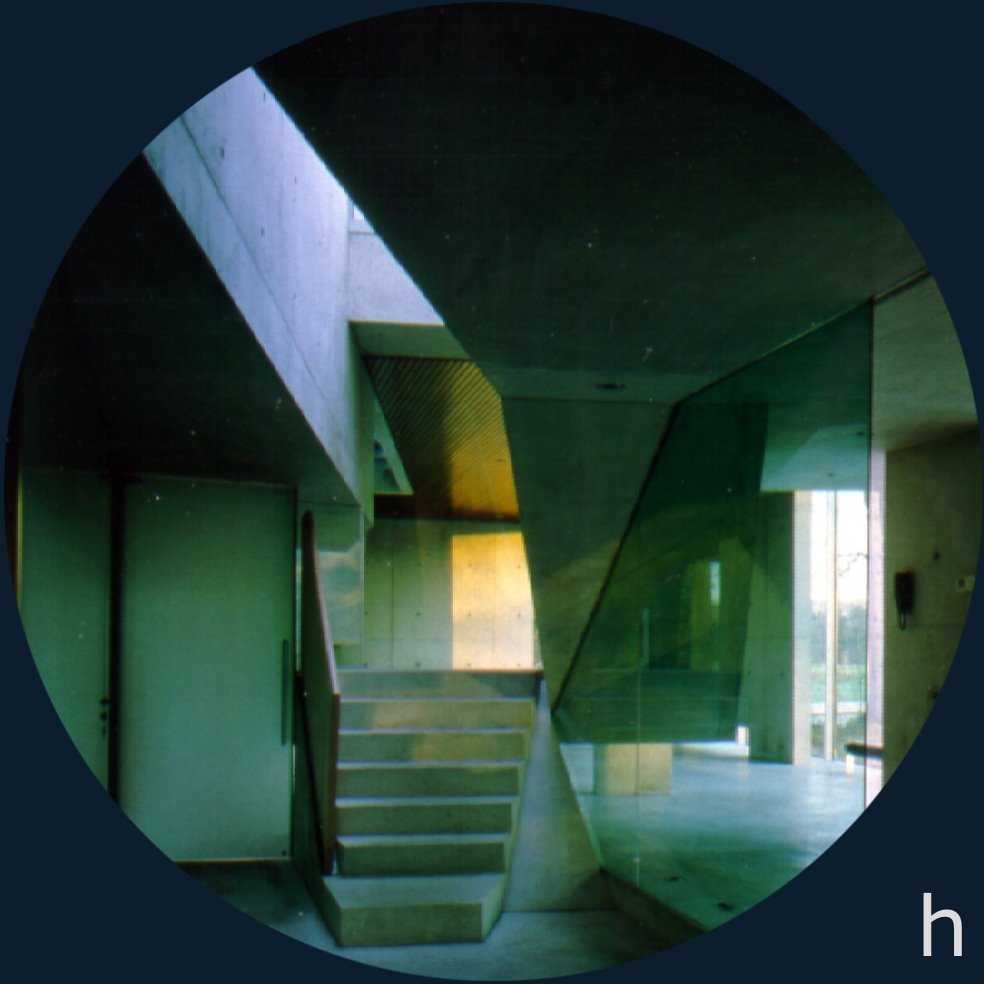Saturday 30 October 2010
Thursday 28 October 2010
Wednesday 27 October 2010
Tuesday 26 October 2010
Façade Component - Development 2
Modified the design by removing the secondary frame and replacing the telescopic actuator with a tension wire positioned as part of the main frame. This has simplified the design and is now a lot more aesthetically pleasing. The filter mechanism has been removed as it was impractical.
Façade Component - Development
Telescopic actuator to induce tension in canopy, creating openings around perimeter for light penetration. Doubling up on components increases design complexity so changes are required.
Circular colour filter which sweeps out of roller mechanism to change tone of light in building. Issues of variation between colours not yet resolved.
Façade Component - Initial ideas
Objectives:
A tessellating component able to control light entering a building at the façade level.
Initial sketches:
A tessellating component able to control light entering a building at the façade level.
Initial sketches:
Saturday 16 October 2010
Research Synopsis - First Draft - Parametricism
parametric adj. 1. Of or relating to or in terms of a parameter
2. Objects in a CAD model that can be modified simply by
changing the parameters used to create it
The development of 3D CAD modelling over the past twenty years has enabled architects to develop more complex and intricate designs. Previously, CAD software was primarily used as an alternate drafting tool, and was used in the same manner as a drawing board to produce 2D drawings. With the development of solid modelling, architects can now develop proposals live in three dimensions which allows the immediate visualisation of the spaces and forms created.
Historically architects have traditionally worked using Euclidean geometries of planar shapes and cylindrical, spherical or conical forms. Now however, 3D CAD tools allow designers to generate forms from non-Euclidean geometries which opens a whole new world of possibilities.
Parametric design uses non-Euclidean geometry to replace stable with variable forms and the idea of singularity with multiplicity. The design is dictated by its parameters, not by its shape.
By using a parametric approach, elements of a design can be linked together, creating interdependent relationships. The outcome of this is that by adjusting individual parameters of components, all connected elements will be responsive to the change. This allows a harmony to be developed between the different design elements without the need for time consuming remodelling.
Zaha Hadid Architects are pioneers in the field of parametric design. They claim the completion of the MAXXI in Rome marks the beginning of a new style of architecture: Parametricism. My intent is to investigate this claim.
Patrik Schumacher of Zaha Hadid Architects published his Parametricist Manifesto in 2008. My methodology will begin by investigating what defines the style of Parametricism and how it differs from other emerging CAD based styles.
The next step will be to analyse how Parametricism has been used in the design of the MAXXI in Rome. Through evaluating the style through the design process, a greater understanding of the principles and philosophies behind will be achieved.
Once an understanding of the style is established, a critical evaluation of the its impact on the future of architectural design can be carried out. The following key questions will be posed:
2. Objects in a CAD model that can be modified simply by
changing the parameters used to create it
The development of 3D CAD modelling over the past twenty years has enabled architects to develop more complex and intricate designs. Previously, CAD software was primarily used as an alternate drafting tool, and was used in the same manner as a drawing board to produce 2D drawings. With the development of solid modelling, architects can now develop proposals live in three dimensions which allows the immediate visualisation of the spaces and forms created.
Historically architects have traditionally worked using Euclidean geometries of planar shapes and cylindrical, spherical or conical forms. Now however, 3D CAD tools allow designers to generate forms from non-Euclidean geometries which opens a whole new world of possibilities.
Parametric design uses non-Euclidean geometry to replace stable with variable forms and the idea of singularity with multiplicity. The design is dictated by its parameters, not by its shape.
By using a parametric approach, elements of a design can be linked together, creating interdependent relationships. The outcome of this is that by adjusting individual parameters of components, all connected elements will be responsive to the change. This allows a harmony to be developed between the different design elements without the need for time consuming remodelling.
Zaha Hadid Architects are pioneers in the field of parametric design. They claim the completion of the MAXXI in Rome marks the beginning of a new style of architecture: Parametricism. My intent is to investigate this claim.
 |
| MAXXI: Museum of XXI Century Arts, Rome, 2009 - Zaha Hadid Architects |
Patrik Schumacher of Zaha Hadid Architects published his Parametricist Manifesto in 2008. My methodology will begin by investigating what defines the style of Parametricism and how it differs from other emerging CAD based styles.
The next step will be to analyse how Parametricism has been used in the design of the MAXXI in Rome. Through evaluating the style through the design process, a greater understanding of the principles and philosophies behind will be achieved.
Once an understanding of the style is established, a critical evaluation of the its impact on the future of architectural design can be carried out. The following key questions will be posed:
Is Parametricism a style?
Is Parametricism typology dependant?
What are the limits of Parametricism?
Is Parametricism sustainable?
Is Parametricism typology dependant?
What are the limits of Parametricism?
Is Parametricism sustainable?
Cinema 4D
To anyone interested in finding more out about Cinema 4D, what it can do and how easy it is to use, have a look at this site:
http://greyscalegorilla.com/blog/category/cinema4d/
Loads of tutorials showing some of the features and work flows.
http://greyscalegorilla.com/blog/category/cinema4d/
Loads of tutorials showing some of the features and work flows.
Brief Synopsis - Second Draft - Nottingham Cultural Centre
transitory adj. Existing or lasting only a short time; short-lived or temporary
event n. 1. a. Something that takes place; an occurrence.
b. A significant occurrence or happening.
c. A social gathering or activity.
2. The final result; the outcome.
A transitory event building can be interpreted in a number of ways. It can describe a building which is designed for an particular event but can then be adapted to accommodate an alternate use afterwards e.g. the Olympic Park 2012. Alternatively it may also describe a building which houses a reoccurring primary event with intermediary, secondary events in between occurrences e.g. Nottingham Market Square. The main characteristics of the typology are adaptability and flexibility.
The city of Nottingham has a growing cultural movement. The recent completion of the Nottingham Contemporary has added to an already varied stock of cultural iconic buildings in the city which includes the Theatre Royal, Nottingham Playhouse and Nottingham Arena. At the moment however, there is no cultural building currently in the centre of the city around the Market Square.
The Nottingham Contemporary has succeeded in creating a high-quality exhibition space for the city but has failed on several other levels. The gallery has isolated itself from the city both through its exterior design and location.
Nottingham’s most famous cultural icon is Robin Hood. This world famous character is the city’s most recognisable symbol. Since the closing of The Tales of Robin Hood (the indoor visitor attraction) in January 2009, there is no building dedicated to Nottingham’s global symbol.
A new cultural centre in the city would help enhance the city’s edifying building stock as well as developing links between Market Square and the Nottingham Contemporary. The building would also provide the opportunity for a permanent focal point for the iconisation of Robin Hood in Nottingham city centre.
The design for a new cultural hub should present an engaging and inspirational environment for the public. It should be integrated into the urban context and be adaptable for a variety of different uses and events.
The building will consist of a series of multifunctional zones which advocate usage flexibility for a variety of events. Through parametric design techniques, the building will be able to link zones seamlessly into a fluid and interrelating series of spaces. Through the manipulation of light in the spaces, unique zones will be established based on individual event requirements. The fluid connections will allow the natural expansion of individual events into the surrounding spaces as needed.
event n. 1. a. Something that takes place; an occurrence.
b. A significant occurrence or happening.
c. A social gathering or activity.
2. The final result; the outcome.
A transitory event building can be interpreted in a number of ways. It can describe a building which is designed for an particular event but can then be adapted to accommodate an alternate use afterwards e.g. the Olympic Park 2012. Alternatively it may also describe a building which houses a reoccurring primary event with intermediary, secondary events in between occurrences e.g. Nottingham Market Square. The main characteristics of the typology are adaptability and flexibility.
“As the soil, however rich it may be, cannot be productive without cultivation, so the mind without culture can never produce good fruit.”
- Seneca (Roman philosopher, mid-1st century AD)
The city of Nottingham has a growing cultural movement. The recent completion of the Nottingham Contemporary has added to an already varied stock of cultural iconic buildings in the city which includes the Theatre Royal, Nottingham Playhouse and Nottingham Arena. At the moment however, there is no cultural building currently in the centre of the city around the Market Square.
The Nottingham Contemporary has succeeded in creating a high-quality exhibition space for the city but has failed on several other levels. The gallery has isolated itself from the city both through its exterior design and location.
Nottingham’s most famous cultural icon is Robin Hood. This world famous character is the city’s most recognisable symbol. Since the closing of The Tales of Robin Hood (the indoor visitor attraction) in January 2009, there is no building dedicated to Nottingham’s global symbol.
A new cultural centre in the city would help enhance the city’s edifying building stock as well as developing links between Market Square and the Nottingham Contemporary. The building would also provide the opportunity for a permanent focal point for the iconisation of Robin Hood in Nottingham city centre.
“Architecture is the simplest means of articulating time and space, of modulating reality, of engendering dreams. It is a matter not only of plastic articulation and modulation expressing an ephemeral beauty, but of a modulation producing influences in accordance with the eternal spectrum of human desires and the progress in realizing them.”
- Ivan Chtcheglov (French political theorist)
The design for a new cultural hub should present an engaging and inspirational environment for the public. It should be integrated into the urban context and be adaptable for a variety of different uses and events.
The building will consist of a series of multifunctional zones which advocate usage flexibility for a variety of events. Through parametric design techniques, the building will be able to link zones seamlessly into a fluid and interrelating series of spaces. Through the manipulation of light in the spaces, unique zones will be established based on individual event requirements. The fluid connections will allow the natural expansion of individual events into the surrounding spaces as needed.
 |
| Pattern illustrating the proposed blending of distinctive zones in the building |
Wednesday 13 October 2010
Tuesday 12 October 2010
Monday 11 October 2010
Sunday 10 October 2010
Saturday 9 October 2010
Brief Synopsis - First Draft - Nottingham Cultural Centre
transitory adj. Existing or lasting only a short time; short-lived or temporary
event n. 1. a. Something that takes place; an occurrence.
b. A significant occurrence or happening.
c. A social gathering or activity.
2. The final result; the outcome.
A transitory event building can be interpreted in a number of ways. It can describe a building which is designed for an particular event but can then be adapted to accommodate an alternate use afterwards e.g. the Olympic Park 2012. Alternatively it may also describe a building which houses a reoccurring primary event with intermediary, secondary events in between occurrences e.g. Nottingham Market Square. The main characteristics of the typology are adaptability and flexibility.
“As the soil, however rich it may be, cannot be productive without cultivation, so the mind without culture can never produce good fruit.”
- Seneca (Roman philosopher, mid-1st century AD)
The city of Nottingham has a growing cultural movement. The recent completion of the Nottingham Contemporary has added to an already varied stock of cultural iconic buildings in the city which includes the Theatre Royal, Nottingham Playhouse and Nottingham Arena. At the moment however, there is no cultural icon currently in the centre of the city around the Market Square.
Nottingham’s most famous cultural icon is Robin Hood. This world famous character is the city’s most recognisable symbol. Since the closing of The Tales of Robin Hood (the indoor visitor attraction) in January 2009, there is no building dedicated to Nottingham’s cultural icon.
A new cultural centre in the city would help enhance the city’s edifying building stock through the inclusion of a multimedia library, art gallery, multi-purpose performance space and conference rooms. The building would also provide the opportunity for a permanent focal point for the iconisation of Robin Hood.
“Architecture is the simplest means of articulating time and space, of modulating reality, of engendering dreams. It is a matter not only of plastic articulation and modulation expressing an ephemeral beauty, but of a modulation producing influences in accordance with the eternal spectrum of human desires and the progress in realizing them.”
- Ivan Chtcheglov (French political theorist)
The design for a new cultural hub should present an engaging and inspirational environment for the public. It should be integrated into the urban context and be adaptable for a variety of different uses and events. The merging of occupancy with a Robin Hood landmark, will justify the design of a theatrical, almost cinematographic experience of space throughout the structure. Through the use of performative geometry, a more succinct building structure can be developed which will help enable the merging of the separate building events into a more fluid and engaging synergy of our diverse cultural heritage.
event n. 1. a. Something that takes place; an occurrence.
b. A significant occurrence or happening.
c. A social gathering or activity.
2. The final result; the outcome.
A transitory event building can be interpreted in a number of ways. It can describe a building which is designed for an particular event but can then be adapted to accommodate an alternate use afterwards e.g. the Olympic Park 2012. Alternatively it may also describe a building which houses a reoccurring primary event with intermediary, secondary events in between occurrences e.g. Nottingham Market Square. The main characteristics of the typology are adaptability and flexibility.
“As the soil, however rich it may be, cannot be productive without cultivation, so the mind without culture can never produce good fruit.”
- Seneca (Roman philosopher, mid-1st century AD)
The city of Nottingham has a growing cultural movement. The recent completion of the Nottingham Contemporary has added to an already varied stock of cultural iconic buildings in the city which includes the Theatre Royal, Nottingham Playhouse and Nottingham Arena. At the moment however, there is no cultural icon currently in the centre of the city around the Market Square.
Nottingham’s most famous cultural icon is Robin Hood. This world famous character is the city’s most recognisable symbol. Since the closing of The Tales of Robin Hood (the indoor visitor attraction) in January 2009, there is no building dedicated to Nottingham’s cultural icon.
A new cultural centre in the city would help enhance the city’s edifying building stock through the inclusion of a multimedia library, art gallery, multi-purpose performance space and conference rooms. The building would also provide the opportunity for a permanent focal point for the iconisation of Robin Hood.
“Architecture is the simplest means of articulating time and space, of modulating reality, of engendering dreams. It is a matter not only of plastic articulation and modulation expressing an ephemeral beauty, but of a modulation producing influences in accordance with the eternal spectrum of human desires and the progress in realizing them.”
- Ivan Chtcheglov (French political theorist)
The design for a new cultural hub should present an engaging and inspirational environment for the public. It should be integrated into the urban context and be adaptable for a variety of different uses and events. The merging of occupancy with a Robin Hood landmark, will justify the design of a theatrical, almost cinematographic experience of space throughout the structure. Through the use of performative geometry, a more succinct building structure can be developed which will help enable the merging of the separate building events into a more fluid and engaging synergy of our diverse cultural heritage.
Subscribe to:
Posts (Atom)





































